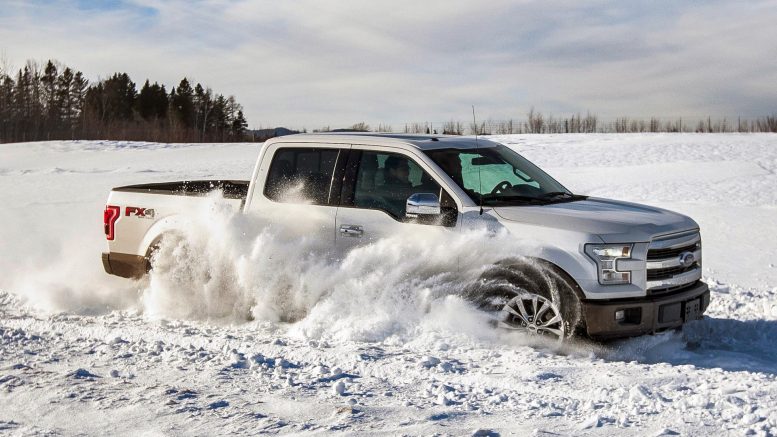When the wind blows, the snow flies and the water freezes– drivers are presented with many more hazards. Since the change is seasonal, we may often forget the consequences of operating a vehicle in winter. Preparing your automobile for cold weather is a good way to protect it, while keeping you, your family and other drivers safe. Read on for Heartland Ford’s guide to vehicle tech necessary for winter driving.
TAKE A BRAKE
Many years ago, drivers would be coached to brake in a specific way– especially during icy conditions. Holding the pedal all the way down could cause traction loss and start a skid, so pumping the brake pedal became the norm. Since then, most vehicle manufacturers (including all New Ford Cars & Trucks) have adopted anti-lock brake systems (ABS): an electronic control that automatically pulses the brakes, regardless of driver input. Ensure your winter vehicle is equipped with properly maintained ABS features.
GET A GRIP
ABS isn’t the only technological advancement to improve the safety of modern vehicles. Electronic traction control and stability systems make subtle adjustments to the driver’s input. Fishtailing, over-steering and spinning wheels are just a few of the problems addressed by these high-tech features. Most modern vehicles come standard with these options (compared to those you may find in many used cars), but make sure you familiarize all drivers with how they work and when to use them.
4×4/4WD vs. AWD
It’s common knowledge that power is transmitted from your vehicle’s engine to the wheels. Often, automobiles fall into two categories: front-wheel drive or rear-wheel drive. In these cases, either the front or rear wheels power the motion of the vehicle. Once the domain of off-road vehicles, four-wheel drive and all-wheel drive can now be offered in many other makes and models. Four-wheel or four-by-four vehicles drive all wheels when the setting is activated. Conversely, all-wheel drive use electrical systems to activate the other set of wheels as needed.
WHAT LIES BENEATH
Don’t overlook your vehicle’s ground clearance when preparing for winter! Snow or ice can build up quickly, making low-clearance a serious issue. Mechanical and structural damage is just one consequence– most seriously, you could become stranded by bottoming out or high centering you vehicle on a snow bank, windrow or ice build-up.
WHERE THE RUBBER MEETS THE ROAD
Winter tires are less popular these days thanks to the rise of “all-season” products. Despite the claims, all-weather tires are rarely equipped to work as well in cold temperatures. Installing a set of winter tires not only gives you better traction and control, but it also extends the life of the set you use in the spring and summer.

Be the first to comment on "Vehicle Tech Necessary for Winter Driving in Alberta"